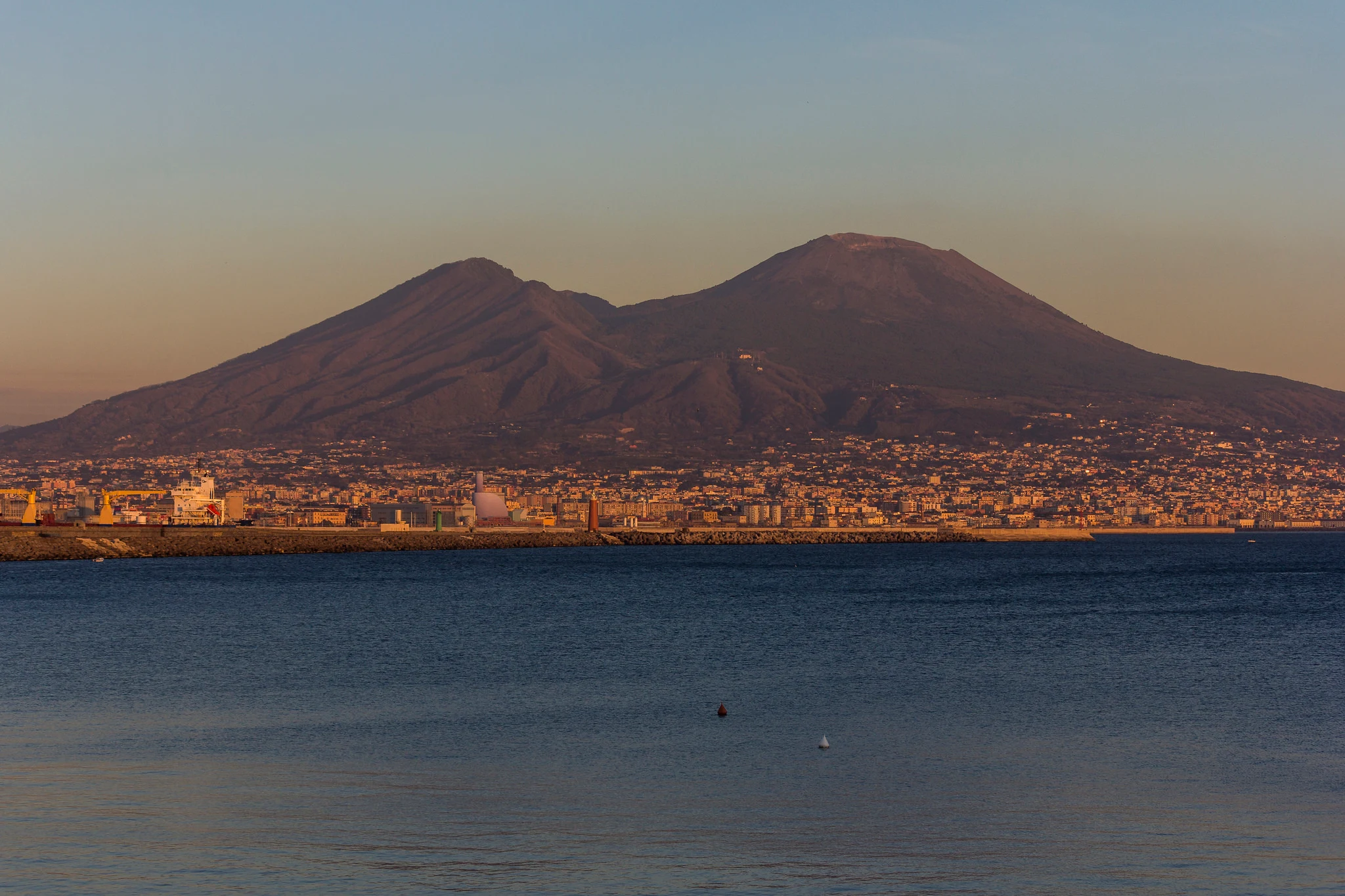The eruption of Mount Vesuvius is an interesting topic because Vesuvius is a stratovolcano. Located in Italy, it is the only European volcano to have erupted within the last hundred years.
 |
| Mount Vesuvius |
Nowadays, Mount Vesuvius is widely known for standing out against the backdrop of the picturesque Gulf of Naples. But it was she who was responsible for the destruction of the Roman cities of Herculaneum and Pompeii, which occurred in 79 AD. Mount Vesuvius is located on the border of the African and Eurasian plates.
Vesuvius is considered one of the most dangerous volcanoes in the world, it poses a potential threat to the lives of 3,000,000 people living near it. In fact, it is the most densely populated volcanic area in the world.
Vesuvius is a particular "humped mountain" with a large cone that is partly surrounded by a steep caldera rim. This setting was caused by the collapse of a much higher structure called Monte Somma. A large cone or, as the locals call it, Gran Cono, appeared as a result of 79 eruptions. For the same reason, Mount Vesuvius is called Somma-Vesuvius (Somma-Vesuvius, Somma-Vesuvio). The term "somma" means "a volcano with a caldera in the form of an annular or semi-annular shaft around a younger inner volcanic cone."
 |
| Mount Vesuvius |
The height of the main cone is 1,281 m or 4,202 feet! The slopes of the mountain are traumatized by lava flows; however, they are covered with lush vegetation. Shrubs grow in the higher elevations, while vineyards grow in the low plains.
Vesuvius is considered an active volcano, although it emits almost no steam, which comes out of the vents at the base of the crater. The entire Mount Vesuvius is covered with layers of lava, volcanic ash and pumice.
Mount Vesuvius was formed as the African Plate moved below the level of the Eurasian Plate. The hot, hard surface layer melted into liquid rock, and because the magma was less dense than the surrounding rock, it bled upward to form a volcano.
Mount Vesuvius is the only volcano within the Campania volcanic arc that has erupted in recent history. Many other volcanoes are considered either dormant or have not erupted for tens of thousands of years. Mount Vesuvius began to form about 25,000 years ago, and the lowest layer of eruptive material lies on top of the 34,000-year-old Campanian Ignimbrite.
The eruptions in Mount Vesuvius are very different in their destructive power and are characterized by explosive outbursts. Several times the eruptions were so large that they covered all of southern Europe in ash. In fact, during the eruptions of Vesuvius in 472 and 1631, ash reached Constantinople in Turkey, which was at least 1,200 km away!
Mount Vesuvius was formed by a series of lava flows and a number of small explosive eruptions that occurred from time to time. However, the nature of the eruptions changed to powerful explosive Plinian eruptions.
 |
| Mount Vesuvius |
The mountain is recorded as having been silent for several hundred years and is described as being "covered with vineyards and orchards". However, the summit remained rocky. In 73 BC, in a vast area of almost perpendicular cliffs, it was the site of the camp site of Spartacus (Spartacus).
There are many references to the existence of Mount Vesuvius. The historian Strabo described the mountain in his encyclopedia Geographica as a predominantly flat and desolate peak with soot-covered, ash-stained rocks. He explained the fertility of the soil on the slopes of the mountain by its volcanic activity.
The population of the city of Pompeii, located around the foot of Mount Vesuvius, was mainly engaged in agriculture. During the 79 eruption, which lasted at least 19 hours, the volcano released approximately 4 cubic kilometers of ash and stones, as well as about 10 feet of tephra, under which Pompeii was buried.
The eruption of Vesuvius on August 24 and 25, 79, occurred according to the Plinian and Peleian types. It traveled for eighteen to twenty hours, raining pumice in the southern part of the cone, reaching as far as Cape Misenum and being largely concentrated to the west and northwest.
The cities of Pompeii and Herculaneum were not destined to recover. Their location was accidentally discovered in the 18th century. Today, the area around Vesuvius has been declared a National Park and is open to visitors.
